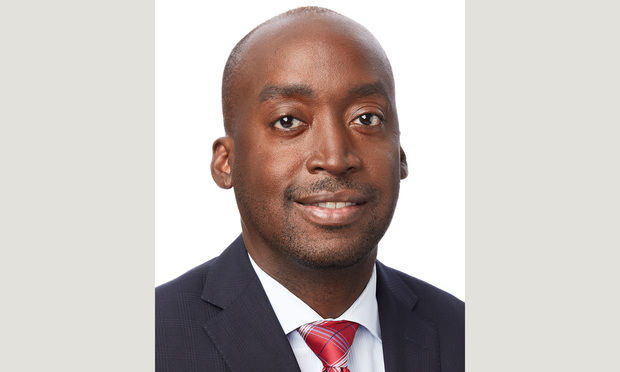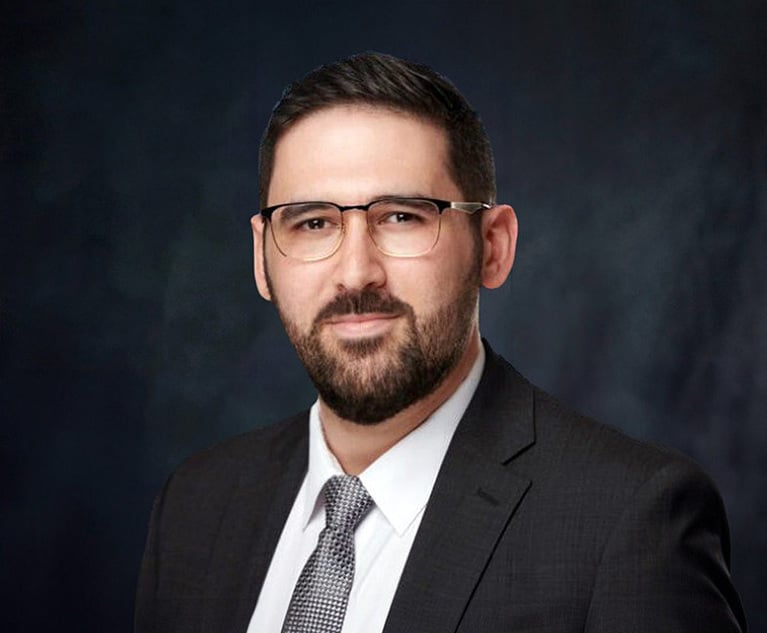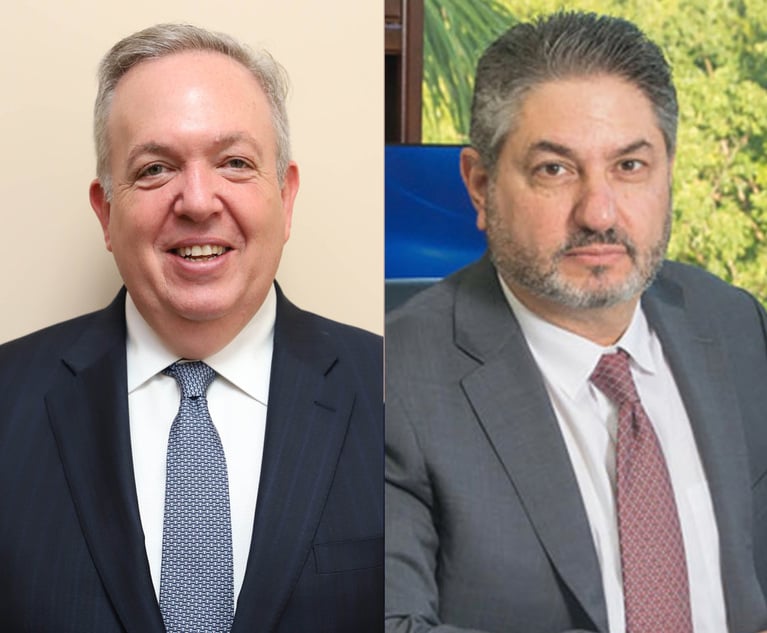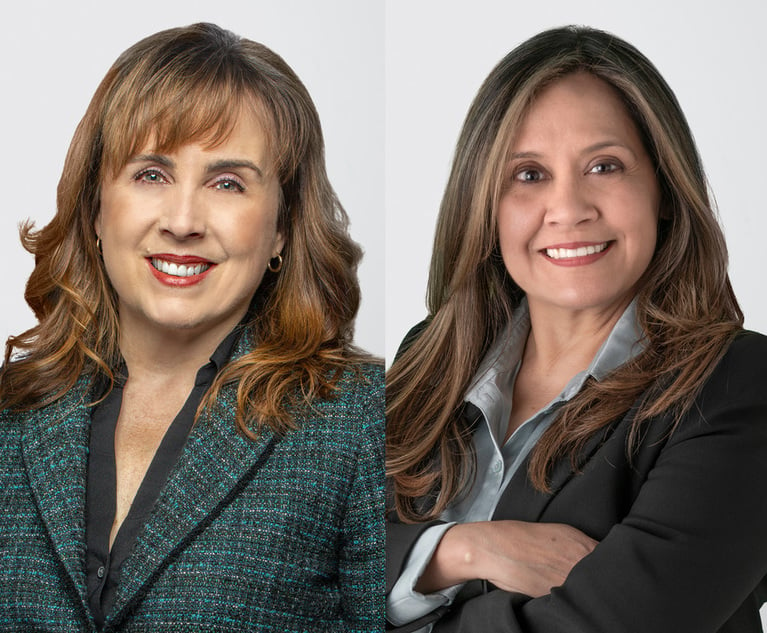Leading the Way for Social Change: A Prolonged and Focused Path
Over the last several weeks, law firm leaders have begun to reexamine their firm's participation and investment in diversity and other similar programs (both internal and external). It is understood that firms can help address an underlying cause of racial and other inequalities—i.e., representation, by earnestly supporting and fostering diversity and inclusion in a broader sense.
July 20, 2020 at 06:00 AM
5 minute read
 Adrian Felix, partner with Bilzin Sumberg in Miami.
Adrian Felix, partner with Bilzin Sumberg in Miami.
The recent deaths of George Floyd and Breonna Taylor, and the resulting protests around the country, pushed the ongoing issues of racial injustice and inequality in the United States to the forefront of our national conversation. Indeed, businesses, sports leagues, local leaders, and many individuals have been spurred to take a public stance and play a more proactive role in demanding institutional-level change. Such social activism can result in immediate changes, as we have witnessed over the past month with the announcement by The Quaker Oats Co. (a subsidiary of PepsiCo Inc.) to retire its Aunt Jemima brand, and the Washington Redskins NFL team's recent decision to change its name and logo due to mounting pressure from its corporate sponsors. History has shown though that sustainable change often takes a prolonged, focused effort at all levels—individual, business and government.
For instance, it is no secret that the legal industry has not historically been a model of success in terms of the recruitment, retention and promotion of minority lawyers. A recent study by the National Association for Law Placement, Inc. (NALP) of over 1,000 leading law firms found that, over the past decade, the percentage of Black/African American partners at law firms has only increased 0.12% (from 1.71% to 1.83%), and the percentage of Black/African American associates at law firms has largely remained flat (4.66% to 4.48%).
Where does that leave us? Over the last several weeks, law firm leaders have begun to reexamine their firm's participation and investment in diversity and other similar programs (both internal and external). It is understood that firms can help address an underlying cause of racial and other inequalities—i.e., representation, by earnestly supporting and fostering diversity and inclusion in a broader sense.
Diversity is critical to the future of the legal profession. The nation's demographics have become increasingly diverse over the past two decades, thus having a legal industry that is reflective of the community and the people it serves engenders confidence and trust from the public.
Additionally, having lawyers of diverse backgrounds, brings different perspectives, experiences and opinions to the table, thereby, leading to better collaborative and innovative solutions and better problem-solving models, than those obtained by legal teams who share the same or similar backgrounds. Although outside the legal industry, the Gucci's "blackface" sweater controversy in 2019 provides a prime example of an issue that could have been avoided had the company's design team been more diverse.
Last, law firms that recognize the value of and embrace diversity, in their employees and within the culture of the law firm, are better positioned to thrive during economic shifts and service corporate clients (many of whom are beginning to demand their law firms be more diverse).
The most important way(s) to improve diversity within the legal industry is for law firms (and businesses) to do a better job at recruiting and retaining diverse attorneys long-term. In that regard, the legal industry has made significant improvements over the years of developing and supporting a sustainable pipeline for diverse attorneys, through such programs as:
- Year Up, a program dedicated to closing the 'Opportunity Guide' by instilling young adults with the skills, experiences, tools, and support through different training and internship opportunities that will empower and create a path for them to succeed in today's professional world.
- Street Law, a global, nonprofit organization committed to developing classroom and community programs that educate young professionals about the law and government. Street Law's Diversity Pipeline Programs partners legal professionals with high school law classes to broaden students' knowledge and interest in the law and legal careers.
- Lavender Law Conference & Career Fair, the largest annual LGBTQ+ legal conference in the country dedicated to supporting diversity in the legal profession and offer opportunities for candidates to network with law firms, government agencies, organizations, and legal departments.
- ABA Judicial Intern Opportunity Program (JIOP), a program designed to provide judicial internship opportunities to law students that associate with unrepresented racial and ethnic groups within the legal industry, students with disabilities, gender and sexual orientation, or those that are economically disadvantaged.
- Southeastern Minority Job Fair (SEMJF), one of the oldest and largest legal interview programs in the country that connects employers and diverse students from over 50 law schools in the Southeastern United States.
Further, many law firms have launched committees designed to improve diversity and the culture of inclusion within the workplace, and committees designed to ensure diverse attorneys are getting the same opportunities to meet clients and work on meaningful matters. Through such committees, law firms can help educate employees on implicit bias and discrimination, provide resources to promote understanding and inclusion, and create an overall more welcoming environment for diverse attorneys.
Attorneys, legal professionals and law firms have the resources and ability to make a profound impact on diversity. While there has been some headway in the last few years, and following recent events, there is still more that can and should be done to make a lasting impact.
We need to create a foundation for the future. Again, sustainable change is not something that will happen overnight. Only through purposeful action, communication, and persistent effort will the legal industry increase its diversity and evolve, and thus, lead the way for social change. So, it is up to every law firm, legal professional, bar association, legal department, and law school to do their part, both in terms of their own organizations and in terms of their public support of outside social change organizations.
Adrian K. Felix is a Miami litigation partner with Bilzin Sumberg and co-chair of its diversity committee.
This content has been archived. It is available through our partners, LexisNexis® and Bloomberg Law.
To view this content, please continue to their sites.
Not a Lexis Subscriber?
Subscribe Now
Not a Bloomberg Law Subscriber?
Subscribe Now
NOT FOR REPRINT
© 2025 ALM Global, LLC, All Rights Reserved. Request academic re-use from www.copyright.com. All other uses, submit a request to [email protected]. For more information visit Asset & Logo Licensing.
You Might Like
View All
Conversation Catalyst: Transforming Professional Advancement Through Strategic Dialogue
5 minute read
SEC Whistleblower Program: What to Expect Under the Trump Administration
6 minute read
Turning the Shock of a January Marital Split Into Effective Strategies for Your Well-Being
5 minute read
Trending Stories
- 1CFPB Labor Union Files Twin Lawsuits Seeking to Prevent Agency's Closure
- 2Crypto Crime Down, Hacks Up: Lawyers Warned of 2025 Security Shake-Up
- 3Atlanta Calling: National Law Firms Flock to a ‘Hotbed for Talented Lawyers’
- 4Privacy Suit Targets Education Department Over Disclosure of Student Financial Data to DOGE
- 5Colwell Law Group Founder Has Died in Skiing Accident
Who Got The Work
J. Brugh Lower of Gibbons has entered an appearance for industrial equipment supplier Devco Corporation in a pending trademark infringement lawsuit. The suit, accusing the defendant of selling knock-off Graco products, was filed Dec. 18 in New Jersey District Court by Rivkin Radler on behalf of Graco Inc. and Graco Minnesota. The case, assigned to U.S. District Judge Zahid N. Quraishi, is 3:24-cv-11294, Graco Inc. et al v. Devco Corporation.
Who Got The Work
Rebecca Maller-Stein and Kent A. Yalowitz of Arnold & Porter Kaye Scholer have entered their appearances for Hanaco Venture Capital and its executives, Lior Prosor and David Frankel, in a pending securities lawsuit. The action, filed on Dec. 24 in New York Southern District Court by Zell, Aron & Co. on behalf of Goldeneye Advisors, accuses the defendants of negligently and fraudulently managing the plaintiff's $1 million investment. The case, assigned to U.S. District Judge Vernon S. Broderick, is 1:24-cv-09918, Goldeneye Advisors, LLC v. Hanaco Venture Capital, Ltd. et al.
Who Got The Work
Attorneys from A&O Shearman has stepped in as defense counsel for Toronto-Dominion Bank and other defendants in a pending securities class action. The suit, filed Dec. 11 in New York Southern District Court by Bleichmar Fonti & Auld, accuses the defendants of concealing the bank's 'pervasive' deficiencies in regards to its compliance with the Bank Secrecy Act and the quality of its anti-money laundering controls. The case, assigned to U.S. District Judge Arun Subramanian, is 1:24-cv-09445, Gonzalez v. The Toronto-Dominion Bank et al.
Who Got The Work
Crown Castle International, a Pennsylvania company providing shared communications infrastructure, has turned to Luke D. Wolf of Gordon Rees Scully Mansukhani to fend off a pending breach-of-contract lawsuit. The court action, filed Nov. 25 in Michigan Eastern District Court by Hooper Hathaway PC on behalf of The Town Residences LLC, accuses Crown Castle of failing to transfer approximately $30,000 in utility payments from T-Mobile in breach of a roof-top lease and assignment agreement. The case, assigned to U.S. District Judge Susan K. Declercq, is 2:24-cv-13131, The Town Residences LLC v. T-Mobile US, Inc. et al.
Who Got The Work
Wilfred P. Coronato and Daniel M. Schwartz of McCarter & English have stepped in as defense counsel to Electrolux Home Products Inc. in a pending product liability lawsuit. The court action, filed Nov. 26 in New York Eastern District Court by Poulos Lopiccolo PC and Nagel Rice LLP on behalf of David Stern, alleges that the defendant's refrigerators’ drawers and shelving repeatedly break and fall apart within months after purchase. The case, assigned to U.S. District Judge Joan M. Azrack, is 2:24-cv-08204, Stern v. Electrolux Home Products, Inc.
Featured Firms
Law Offices of Gary Martin Hays & Associates, P.C.
(470) 294-1674
Law Offices of Mark E. Salomone
(857) 444-6468
Smith & Hassler
(713) 739-1250






